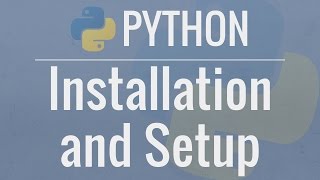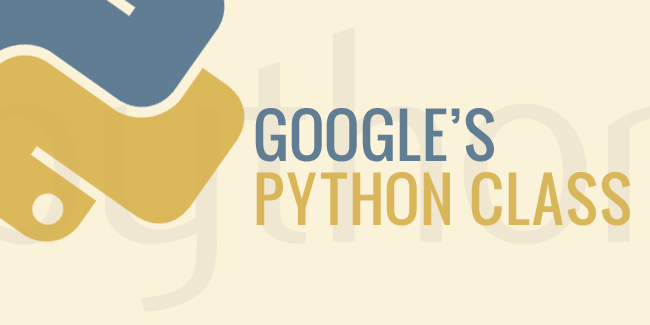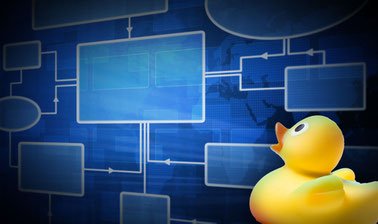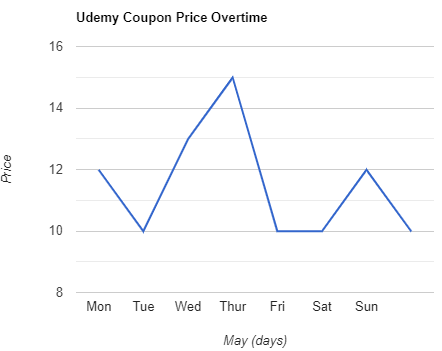Computing in Python II: Control Structures
Learn about control structures, one of the most powerful parts of programming. This course covers conditionals, loops, functions, and error handling, specifically in Python but with broader applicability to other languages as well.
Created by: David Joyner
 Quality Score
Quality Score
Content Quality
/
Video Quality
/
Qualified Instructor
/
Course Pace
/
Course Depth & Coverage
/
Overall Score : 0 / 100
 Live Chat with CourseDuck's Co-Founder for Help
Live Chat with CourseDuck's Co-Founder for Help
Need help deciding on a python course? Or looking for more detail on David Joyner's Computing in Python II: Control Structures? Feel free to chat below.
Join CourseDuck's Online Learning Discord Community
 Course Description
Course Description
Building on your prior knowledge of variables and operators, this course gets into the meat of programming. Organized into five chapters, this course starts by covering the fundamentals of what control structures are and what they do, then moves on to four common control structures in Python. Conditionals let you modify what your program does based on the values of incoming variables. Loops let you repeat tasks for multiple values or while certain conditions hold true. Functions let you encapsulate complex reasoning into reusable chunks of code. Error handling lets you intelligently recover from anticipated and unanticipated glitches.
By the end of this course, you'll be able to write complex programs in Python that perform useful reasoning. For example, you could write a program that calculates your weight on other planets, calculates the standard deviation of a series of numbers, or checks for the validity of an incoming password.
Structurally, the course is comprised of several parts. Instruction is delivered via a series of short (2-3 minute) videos. In between those videos, you'll complete both multiple choice questions and coding problems to demonstrate your knowledge of the material that was just covered.
Chapter 1: Control Structures. The basic role of control structures in general: lines of code that control other lines of code, determining when they execute.
Chapter 2: Conditionals. Building complex reasoning into our code by letting it make decisions based on the changing values of variables, like recommending a raincoat if it's going to rain or issuing a passing grade if a student's average is over 70.
Chapter 3. Loops. Building even more complex reasoning with for loops and while loops, both of which repeat certain lines of code over and over for every value in a list or while some condition is true.
Chapter 4. Functions. Encapsulating blocks of code into reusable functions that can be called as needed, including specifying their input and dictating their output.
Chapter 5. Error Handling. Reacting gracefully when anticipated or unanticipated errors occur during your program's execution.
By the end of this course, you'll be able to write complex programs in Python that perform useful reasoning. For example, you could write a program that calculates your weight on other planets, calculates the standard deviation of a series of numbers, or checks for the validity of an incoming password.
Structurally, the course is comprised of several parts. Instruction is delivered via a series of short (2-3 minute) videos. In between those videos, you'll complete both multiple choice questions and coding problems to demonstrate your knowledge of the material that was just covered.
Chapter 1: Control Structures. The basic role of control structures in general: lines of code that control other lines of code, determining when they execute.
Chapter 2: Conditionals. Building complex reasoning into our code by letting it make decisions based on the changing values of variables, like recommending a raincoat if it's going to rain or issuing a passing grade if a student's average is over 70.
Chapter 3. Loops. Building even more complex reasoning with for loops and while loops, both of which repeat certain lines of code over and over for every value in a list or while some condition is true.
Chapter 4. Functions. Encapsulating blocks of code into reusable functions that can be called as needed, including specifying their input and dictating their output.
Chapter 5. Error Handling. Reacting gracefully when anticipated or unanticipated errors occur during your program's execution.
 Instructor Details
Instructor Details

- 0.0 Rating
 0 Reviews
0 Reviews
David Joyner
David is a Senior Research Associate at the College of Computing at Georgia Institute of Technology. He received his BS in CS, his MS in Human-Computer Interaction, and his PhD in Human Centered Computing all from Georgia Tech.
 Students also recommend
Students also recommend

-
Python Tutorial for Beginners by Corey Schafer (2017)
-
4.8 (28 Reviews)
-
 Provider: YouTube
Provider: YouTube Time: 9h
Time: 9h
Free







